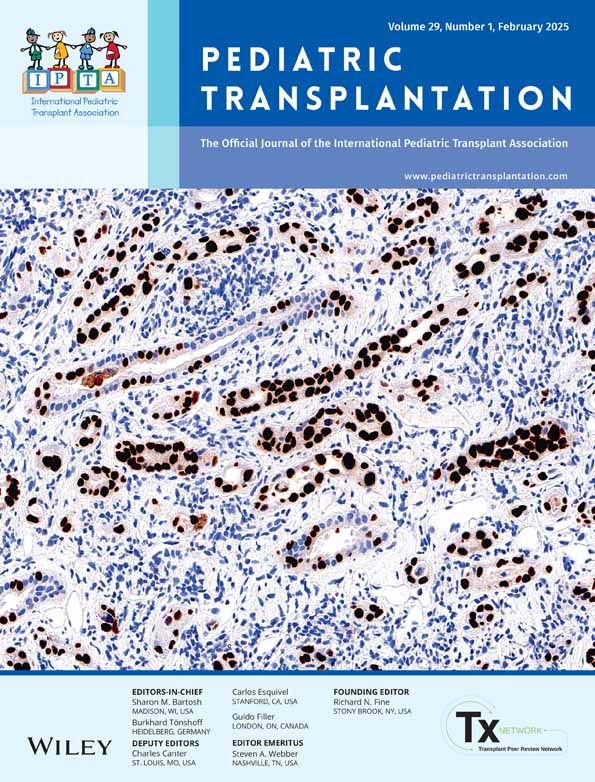Change in Allocation Pattern of Pediatric Deceased Donor Kidneys Following the Implementation of a New Allocation Policy With Pediatric Priority in Korea
Funding: The authors received no specific funding for this work.
ABSTRACT
Background
The Organ Transplantation Act of Korea was amended to state that kidneys from deceased donors under age 19 (previously age 11) must be initially allocated to a waitlisted patient under age 19. The aim of this study was to analyze the change in allocation pattern of kidneys from pediatric donors following implementation of the new policy.
Methods
Data from the Korean Network for Organ Sharing database included donor and recipient information of kidney transplants from pediatric donors from October 2014 to September 2020.
Results
There were 2958 deceased donors. One hundred and sixty-three were under age 19 (163/2958, 5.5%). The study period was divided into two periods: Before policy change and after policy change. A total of 256 kidneys from 163 pediatric donors were allocated to waitlist patients. The proportion of kidneys allocated to recipients under age 19 was significantly higher after policy change (59/65, 90.8%) compared to before policy change (28/191, 14.7%, p < 0.01), with the increase most prominent in recipients aged 11–18 years. Mean time on the waitlist for all pediatric recipients of kidneys from pediatric deceased donors was 545.5 days before the change and 922.0 days after the change (p = 0.02). Mean time on the waitlist for recipients aged 1–10 years was not significantly different and that of recipients aged 11–18 years increased from 801.1 days to 1017.4 days.
Conclusion
A sharp increase in proportion of pediatric kidney recipients from pediatric donors was observed following implementation of amended allocation policy in October 2018.
Conflicts of Interest
The authors declare no conflicts of interest.
Open Research
Data Availability Statement
The data that support the findings of this study are available on request from the corresponding author.




